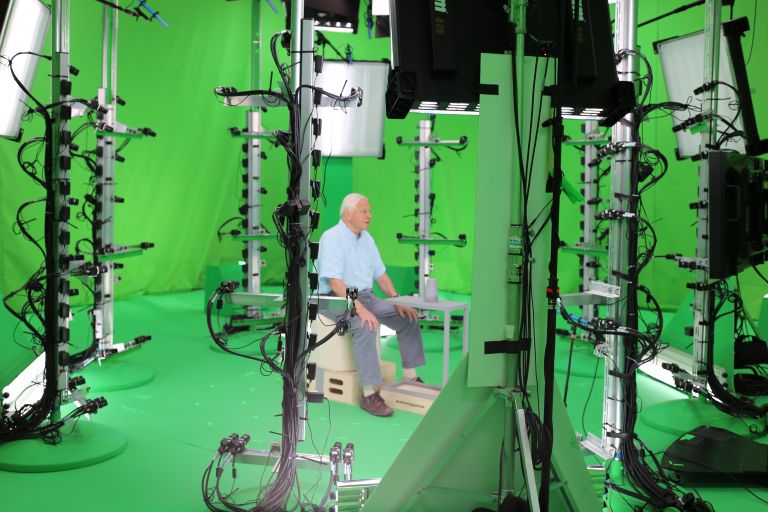Holograms and real-world figures in 3D have always dominated the world of entertainment, conquering the favour of old and new generations of audiences. The ability to translate these 3D figures into the real world, however, is an innovation of recent years.
The emerging technology that allows what until a few years ago seemed impossible is called Volumetric Capture that, capturing objects, locations, or humans three-dimensionally in real-time, manages to transfer them to the web, mobile devices or virtual worlds to be visualized in 3D.
People can “be the director” of a video created with Volumetric Capture by watching and moving to any point in the video. Additionally, because the volumetric video captures person, objects, and space in their true dimensions and shape, the volumetrically recreated features can be viewed from all of these perspectives and angles. Thus, the ability to generate an image from a virtual point of view by providing a sense of real presence within the story or event is this technology’s most impressive feature.
But how real-world figures can be three-dimensionally recreated through volumetric capture?
Multiple cameras are firstly used to film and capture the space, person, or object from every angle. Following, the scene is processed to create a sequence of 3D models. Finally, the meshes are unwrapped, textures are created, and everything is compressed into a data file for the visualization of the content.
At this point, the possibilities that this technology will open in the future are almost clear, and its importance is also underlined by experts that estimated the growth of the volumetric video market from USD 1.4 billion in 2020 to USD 5.8 billion by 2025, where the most significant driver is the increasing demand for 3D/360 content in entertainment and AR/VR applications, together with the proliferation of content delivery devices such as AR/VR HMDs.
As the use of virtual and augmented reality expands throughout industries, not simply in media and entertainment as audiences may imagine, volumetric technology must evolve to support the next generation of high-quality immersive contents.
With this evolution of increasingly creative and immersive features, people and businesses will be able to explore various possibilities. Businesses can explore the potential of training and learning in 3D, bringing living experts directly into the business and let employees enjoy a one-on-one virtual meeting with their CEOs and leadership, as Jason Yim, CEO and Executive Creative Director of Trigger explains.
Training regarding, employees have the possibility to see and use real-life examples of procedures that have gone well or poorly, or how teams interact while working on a project resulting in a more deepen understanding since they can learn using different perspectives of the context, increasing efficiency and saving time.
But the possibilities for enterprises do not stop to training and learning, additionally, corporate communications, customer service, marketing, advertising, product inspection, and brand awareness are just a few examples of application.
On the other hand, volumetric video, when combined with today’s sophisticated VR headsets or through augmented reality glasses, transports viewers to completely new worlds where they have complete control over angles and perspectives, living a more and more immersive and interactive experience capable to transmit all the different dimensions, including the emotional one raising awareness and understanding on the message the business is communicating.
Additionally, volumetric will play a vital role in the metaverse, digitally documenting our world from every viewpoint for recreating it or creating new ones on that basis in a virtual way.
The possibilities created by volumetric capture in the different sectors are endless; for this reason, the contents will become more and more immersive, engaging, and with infinite vision perspectives greatly expanding the quality of realization and creative possibilities.
Introducing Volumetric Capture


